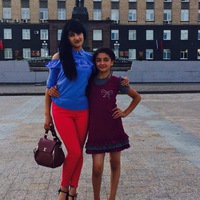
Вопрос задан 29.10.2023 в 19:39.
Предмет История.
Спрашивает Дроздова Аня.
Яким було становище культури в Україні в 30-х роках? Поясніть, що таке «розстріляне відродження».
 0
0
 0
0
Ответы на вопрос
 Внимание! Ответы на вопросы дают живые люди. Они могут содержать ошибочную информацию, заблуждения, а также ответы могут быть сгенерированы нейросетями. Будьте внимательны. Если вы уверены, что ответ неверный, нажмите кнопку "Пожаловаться" под ответом.
Внимание! Ответы на вопросы дают живые люди. Они могут содержать ошибочную информацию, заблуждения, а также ответы могут быть сгенерированы нейросетями. Будьте внимательны. Если вы уверены, что ответ неверный, нажмите кнопку "Пожаловаться" под ответом.

Отвечает Волнухина Лиза.
Ответ:
У 30-х роках проходили сталінські репресії, а отже більшість діячів культури критикують совєцької влада були репресірованни. (Це стосується всього союзу не тільки УРСР) Загалом культура совекцой України в 30-х була не в кращому становищі.
Объяснение:
Розстріляне відродження - простіше кажучи це діячі культури яких репресували в 30-х.
 0
0
 0
0

Отвечает нейросеть ChatGpt. Будьте внимательны, ответы нейросети могут содержать ошибочные или выдуманные данные.
#### The Cultural Situation in Ukraine in the 1930s
The 1930s in Ukraine were marked by significant changes in the cultural landscape. The Soviet Union, under the leadership of Joseph Stalin, implemented policies aimed at consolidating control over all aspects of society, including culture. This period witnessed the rise of socialist realism as the dominant artistic style and the suppression of alternative artistic movements.
**"Rozstriliane Vidrodzhennia" (Executed Renaissance)** was a term used to describe the tragic fate of Ukrainian intellectuals, artists, and writers who were persecuted, imprisoned, or executed during the 1930s. This period saw a systematic crackdown on Ukrainian cultural and intellectual figures who were seen as a threat to the Soviet regime's control over the region.
The term "Rozstriliane Vidrodzhennia" was coined by the Ukrainian diaspora to highlight the loss of a generation of talented individuals who were at the forefront of the Ukrainian cultural renaissance in the early 20th century. These individuals were targeted by the Soviet authorities due to their perceived nationalist tendencies and their commitment to promoting Ukrainian language, literature, and culture.
#### Suppression of Ukrainian Culture
During the 1930s, the Soviet regime implemented a policy of forced collectivization and industrialization, known as the First Five-Year Plan. This policy aimed to transform the predominantly agrarian society of Ukraine into an industrial powerhouse. As part of this process, the Soviet authorities sought to suppress Ukrainian nationalism and promote a unified Soviet identity.
The suppression of Ukrainian culture during this period took various forms. Ukrainian-language publications were censored or shut down, and many Ukrainian intellectuals and writers were arrested, imprisoned, or executed. The Soviet regime also imposed strict control over the arts, promoting socialist realism as the only acceptable artistic style. Artists and writers were expected to create works that glorified the achievements of the Soviet state and portrayed the struggles of the working class.
#### Impact on Ukrainian Intellectuals and Artists
The persecution of Ukrainian intellectuals and artists had a devastating impact on the cultural life of Ukraine. Many talented individuals were silenced or forced into exile, leading to a significant loss of creative output and intellectual discourse. The Ukrainian cultural renaissance of the early 20th century, which had seen a flourishing of literature, art, and music, was abruptly halted.
The suppression of Ukrainian culture also had long-lasting effects on the development of Ukrainian national identity. The Soviet regime's efforts to promote a unified Soviet identity and suppress nationalistic sentiments created a sense of cultural repression and alienation among Ukrainians. This period of cultural suppression and persecution left a lasting legacy on Ukrainian society and continues to shape the cultural and political landscape of Ukraine to this day.
#### Conclusion
In the 1930s, Ukraine experienced a significant suppression of its culture under the Soviet regime. The term "Rozstriliane Vidrodzhennia" was used to describe the persecution and execution of Ukrainian intellectuals, artists, and writers during this period. The Soviet authorities sought to suppress Ukrainian nationalism and promote a unified Soviet identity through the implementation of policies that censored Ukrainian-language publications, imposed strict control over the arts, and targeted individuals who were seen as a threat to the regime's control. This period had a profound impact on Ukrainian culture and national identity, leading to a loss of creative output and a sense of cultural repression among Ukrainians.
 0
0
 0
0
 0
0
 0
0
Похожие вопросы
Топ вопросов за вчера в категории История
Последние заданные вопросы в категории История
Предметы
-
Математика
-
Литература
-
Алгебра
-
Русский язык
-
Геометрия
-
Английский язык
-
Химия
-
Физика
-
Биология
-
Другие предметы
-
История
-
Обществознание
-
Окружающий мир
-
География
-
Українська мова
-
Информатика
-
Українська література
-
Қазақ тiлi
-
Экономика
-
Музыка
-
Право
-
Беларуская мова
-
Французский язык
-
Немецкий язык
-
МХК
-
ОБЖ
-
Психология
-
Физкультура и спорт
-
Астрономия
-
Кыргыз тили
-
Оʻzbek tili


















